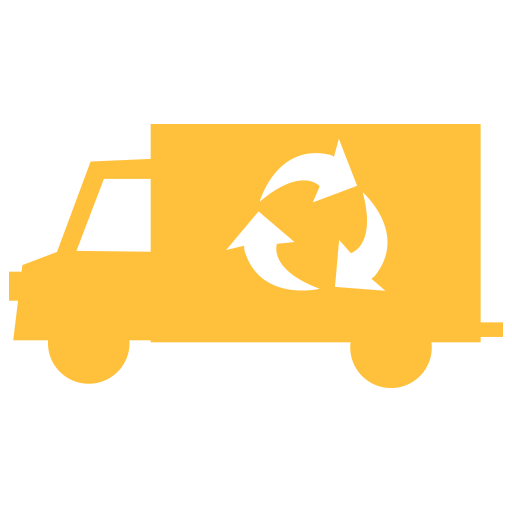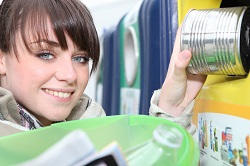Exploring sustainable options for old charger disposal
Posted on 06/06/2025
Exploring Sustainable Options for Old Charger Disposal
Today's fast-paced technology upgrades mean old chargers pile up in our homes at alarming rates. Whether you're replacing a frayed smartphone cable or upgrading to the latest fast charger, it's essential to consider the sustainable disposal of old electronics. Improperly discarded chargers can lead to environmental damage, wasted resources, and clutter. In this comprehensive guide, we explore sustainable options for old charger disposal, including recycling, donation, upcycling, and eco-friendly alternatives.
Why Is Sustainable Charger Disposal Important?
The growing e-waste problem is a global concern. According to the United Nations Environment Programme, over 50 million tons of electronic waste are generated worldwide each year -- and old chargers are a key contributor. With their plastic, copper, and sometimes hazardous components, chargers can release toxic substances into the environment when overlooked or disposed of improperly.
- Environmental Impact: Landfilling chargers leaches chemicals into soil and groundwater.
- Resource Waste: Chargers contain valuable metals like copper and aluminum, which can be recovered and reused through recycling.
- Health Risks: Exposure to e-waste toxins can harm human health, especially in developing countries lacking proper e-waste management systems.
Therefore, finding sustainable ways to dispose of outdated chargers not only clears your drawers but also benefits the planet and its people.

Understanding the Components of Chargers
Before delving into eco-friendly charger disposal methods, it's helpful to know what makes up a typical charger:
- Plastic casing: Often made from non-biodegradable materials.
- Copper wiring: Valuable and recyclable metal.
- Aluminum: Used in plugs and connectors.
- Other metals: Such as tin, gold, and nickel.
- Electronic components: Circuit boards with microchips and resistors.
Disposing of these components responsibly ensures valuable materials are reclaimed and pollutants are minimized.
Top Sustainable Options for Old Charger Disposal
1. Recycling Chargers Through Certified E-Waste Facilities
Recycling is the most effective sustainable disposal method for used and unwanted chargers. Most regions have dedicated e-waste collection sites or programs that handle small electronics. E-waste recyclers safely break down chargers, separating the metal and plastic for reuse.
- How to Find a Recycling Center:
- Use platforms like Earth911 or Call2Recycle to locate facilities.
- Check if local retailers, like Best Buy or Staples, accept chargers in their recycling bins.
- What to Do Before Recycling:
- Bundle cables and adapters for easier transport.
- Remove any batteries from charging devices (these are recycled separately).
Pro Tip: Never throw chargers in your curbside recycling bin unless explicitly accepted. Chargers require special processing to prevent contamination.
2. Retailer Take-Back and Manufacturer Programs
Many electronics manufacturers and retailers offer sustainable take-back schemes to encourage responsible charger disposal.
- Apple: Offers device and accessory recycling in most Apple Stores.
- Samsung: Runs regular e-waste collection events.
- Best Buy/Staples: Accepts most brands' chargers, regardless of where you bought them.
These programs usually guarantee responsible recycling, diverting waste from landfills. Some even offer incentives, such as discounts on new accessories when you trade in old chargers.
Tip: Check company websites to see what accessories are accepted and if you need to prepare items, such as removing packaging or cables.
3. Donating Working Chargers to Extend Their Lifespan
If your old charger is still functional, consider donation before disposal. This helps others, reduces demand for new products, and keeps working electronics in use.
- Charities: Nonprofits, shelters, and community centers often accept functional chargers alongside phones and tablets.
- Schools and Libraries: These institutions sometimes need spare chargers for devices used by students.
- Friends and Neighbors: Share spares locally through social platforms like Nextdoor or Facebook Marketplace.
Before donating, label chargers by type (e.g., micro-USB, USB-C, Lightning) to make them easier for recipients to match to their devices.
4. Upcycling: Creative Ways to Reuse Old Chargers
For those with a creative flair, upcycling offers a sustainable disposal option for chargers by repurposing them into something new.
- DIY Crafts: Use old cords to create cable organizers, jewelry, or decorative art pieces.
- Teaching Tools: Teachers and parents can dissect chargers for STEM lessons about circuitry and electronics.
- Electronics Projects: Spare adapters and cables are handy for hobbyists building kits, Raspberry Pi setups, or Arduino gadgets.
Note: If using old chargers for projects, ensure their power output matches your new application to avoid device damage.
5. Proper Disposal as Last Resort
If chargers are damaged, frayed, or beyond use, responsible disposal is the final sustainable alternative.
- Never incinerate or burn chargers, as this releases harmful toxins.
- Check local waste guidelines -- some municipalities have hazardous waste collections for items with electronic circuitry.
- Wrap frayed cables in tape to prevent accidents if you must place them in the trash (as a very last resort).
However, with so many better disposal methods, landfill should only be considered when all others have been exhausted.
How to Recognize E-Waste Collection Opportunities in Your Area
Knowing where and when to dispose of electronic chargers sustainably is key:
- Attend community e-waste collection days, often held annually at your city hall, schools, or recycling centers.
- Look for permanent e-waste drop-off points at electronics stores.
- Ask local waste authorities for a list of accepted items and dropoff locations for wires and adapters.
Many towns also host volunteer-run recycling drives, ensuring electronic waste goes to certified handlers.
Promoting a Circular Economy: The Role of Individuals and Manufacturers
A circular economy for electronics aims at keeping resources in use for as long as possible. Both consumers and tech companies play a part:
- Manufacturers are introducing universal chargers, biodegradable cables, and better recycling practices.
- Consumers can advocate for right-to-repair, choose modular accessories, and avoid excessive purchases.
By choosing sustainable options for old charger disposal, individuals help close the loop and reduce dependence on raw material extraction.
Future Trends: Universal Chargers and Reduced E-Waste
New regulations and innovations aim to limit the number of obsolete chargers:
- Universal Charging Standards: The European Union requires USB-C as the standard, likely reducing the number of incompatible, unused chargers.
- Biodegradable Materials: Some companies now offer chargers made from recycled plastics or plant-based components.
- Buy-Back and Upgrade Programs: More brands are incentivizing the return of outdated accessories for reuse or material recovery.
Staying informed about these trends empowers consumers to make eco-friendly choices, keeping their environmental footprint minimal.
What Not To Do When Disposing of Old Chargers
- Do not toss chargers in regular trash bins -- they don't belong in general waste.
- Avoid storing too many outdated chargers; they present a fire risk and take up valuable space.
- Don't ship chargers abroad unsafely -- electronic waste shipped irresponsibly often harms vulnerable communities.

FAQs on Sustainable Charger Disposal
- Can I put old chargers in curbside recycling?
No, most household recycling bins cannot handle e-waste. Take chargers to certified recyclers or drop-off points. - What should I do with broken or frayed chargers?
These should go to e-waste recycling facilities. Avoid further use as they could pose electrical hazards. - Are there any rewards for recycling chargers?
Some manufacturers and stores offer discounts or incentives for recycling accessories. Check locally for offers. - How can I extend my charger's useful life?
Avoid bending cables, unplug by the head, and store cords neatly to minimize wear and waste.
Summary: Choosing the Best Option for Sustainable Charger Disposal
As technology evolves, so does our responsibility to handle old electronics thoughtfully. Through certified e-waste recycling, donation, creative upcycling, and proactive participation in take-back programs, every consumer can contribute to a cleaner, greener future.
Remember: Every effort to sustainably dispose of an old charger prevents pollution, recovers resources, and encourages manufacturers to adopt greener practices. When faced with your next drawer full of tangled cords and obsolete plugs, choose a sustainable charger disposal option -- the planet (and future generations) will thank you.
Additional Resources for Eco-Friendly Charger Disposal
- EPA - Electronics Donation and Recycling
- e-Stewards Certified Recyclers
- Greenpeace - E-Waste Solutions
Together, by adopting these eco-friendly practices, we can make real progress in reducing electronic waste and promoting a sustainable world.

 020 3875 4121
020 3875 4121 020 3875 4121
020 3875 4121




 House clearance
House clearance Rubbish collection
Rubbish collection When it comes to your house clearance London you won’t find a better firm in town than London Rubbish Removal! We have a range of ways to...
When it comes to your house clearance London you won’t find a better firm in town than London Rubbish Removal! We have a range of ways to... London Rubbish Removal is just waiting to help you...
London Rubbish Removal is just waiting to help you...





